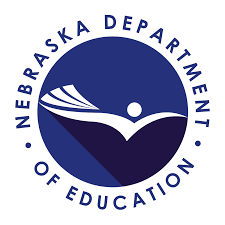![]()

The Nebraska Department of Education released the Nebraska Student-Centered Assessment System (NSCAS) results and the Accountability for a Quality Education System Today and Tomorrow, or AQuESTT classifications today. Both reports provide insight into how students are performing academically on Nebraska’s state standards.
NSCAS English Language Arts (ELA), Mathematics and Science are rigorous assessments with high expectations for postsecondary readiness. NSCAS ELA and Mathematics are given in grades three through eight. NSCAS science assessments are given in fifth and eighth grades and Nebraska juniors take the ACT assessment.
This year the NDE had the opportunity to set new cut scores for Mathematics, the scores that determine levels of proficiency. This happens anytime there is a new assessment or a significant change in an existing assessment. The Mathematics assessment was new for 2023-2024.
The following are among the key findings from this year’s NSCAS:
- 59% of Nebraska students in grades 3-8 were considered proficient in English Language Arts (performing at the On Track or Advanced level).
- 58% of Nebraska students in grades 3-8 were proficient in Math.
- 74% of Nebraska students in grades 3-8 were proficient on the NSCAS Science assessment.
- At the high school level, Nebraska’s juniors were 45% proficient in ELA, 42% in Math, and 49% in Science.
- Literacy is a key priority for the state. The Nebraska State Board of Education has a goal to increase third grade proficiency in English Language Arts to 75% by 2030. This year’s scores outline the work that will be a focus moving forward.
- Grades 4-8 all saw increases in ELA proficiency statewide from last year.
- Proficiency in third grade dropped from 62% to 59% in ELA.
- Students representing different demographics including race, ethnicity, special education, free/reduced lunch, and English learners all saw growth compared to last year however achievement gaps continue to persist.
“Literacy continues to be a priority for the Nebraska Department of Education,” said Commissioner Brian Maher. “We will continue to focus resources on statewide improvement.”
In addition to assessment results, Nebraska released accountability ratings. State and federal law require the NDE to annually classify and designate schools to provide signals for specific supports. Nebraska’s system, AQuESTT – helps ensure all students across all backgrounds and circumstances have access to opportunities and access. AQuESTT annually classifies schools and districts as Excellent, Great, Good, and Needs Support to Improve.
A breakdown of classifications indicated that 323 (29 percent) of schools were classified as Excellent, 359 (33 percent) were Great, 330 (30 percent) were Good, and 89 (8 percent) were designated as Needs Support to Improve.
Additionally, the NDE designates schools as Targeted Support and Improvement (TSI) annually, and Comprehensive Support and Improvement (CSI), and Additional Targeted Support and Improvement (ATSI) every three years. This year, 114 student groups in 50 schools were identified as TSI. For CSI and ATSI, after three years from initial designation, schools are eligible to exit. This year, 120 student groups in 85 schools exited ATSI and 4 schools exited the CSI designation this year. Exit criteria for these schools focus on improvement of designation year scores, and may include improving student academic proficiency on ELA, math, and science assessments, reducing chronic absenteeism, and increasing graduation rates.
More information on assessment and accountability results can be found on the Nebraska Education Profile, nep.education.ne.gov.
